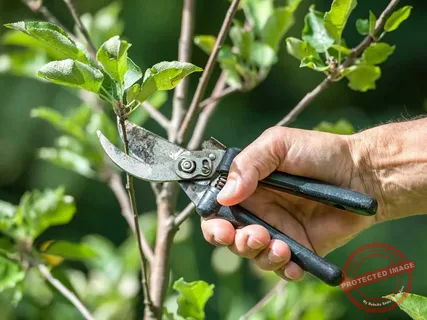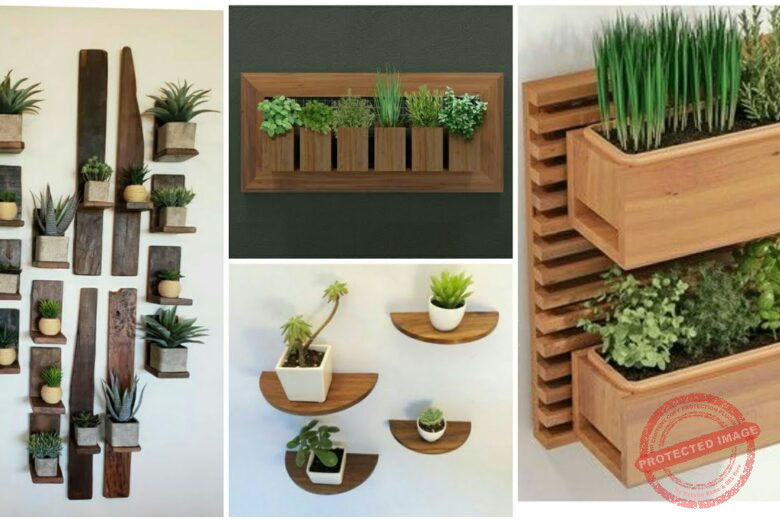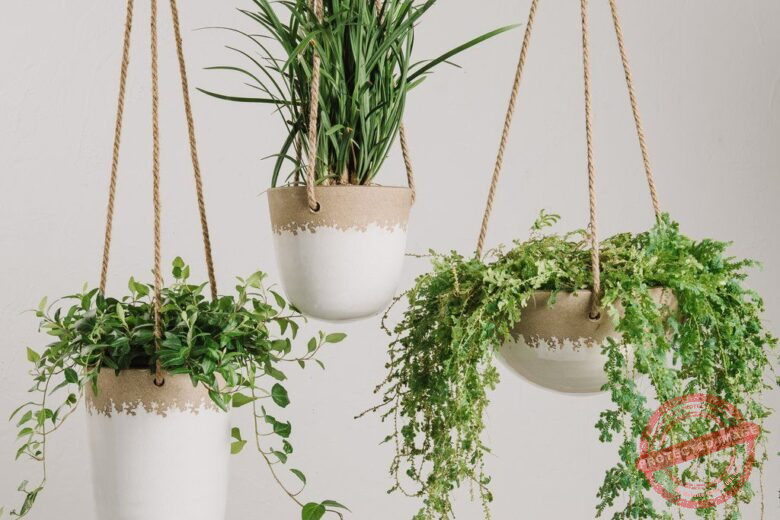Imagine a picturesque landscape in Zone 2, where frigid winters and fleeting growing seasons are no match for the allure of thriving fruit trees. In this enchanting scenario, a medley of fast-growing fruit trees flourish, defying the cold and offering an abundance of delectable fruits.
This captivating transformation is possible through the cultivation of a diverse array of trees that not only endure but thrive in Zone 2’s challenging conditions. From tangy apples to succulent plums, and everything in between, we present 40 remarkable fruit trees that promise a bountiful harvest, turning your garden into a haven of flavor and resilience.
40 Fastest Growing Fruit Trees Zone 2
1. Honeycrisp Apple (Malus domestica ‘Honeycrisp’)
Known for its tantalizing balance of sweetness and tartness, the Honeycrisp Apple is a favorite among apple enthusiasts. Its crisp texture and vibrant flavor make it perfect for both snacking and baking. These trees are hardy and able to withstand cold temperatures, making them an ideal choice for Zone 2 gardens.
Read Also: 20 Fast Growing Fruit Trees Zone 7
2. Montmorency Cherry (Prunus cerasus ‘Montmorency’)
Famous for its use in pies, jams, and preserves, the Montmorency Cherry tree is a marvel in Zone 2. Its bright red, tangy cherries are a harbinger of summer, and the tree’s rapid growth means you won’t have to wait long to enjoy your harvest.
3. Nanking Cherry (Prunus tomentosa)
The Nanking Cherry presents delicate white flowers in the spring, which give way to clusters of small, red cherries. These fruits are both sweet and tart, and the shrub-like growth habit of the tree makes it a versatile addition to smaller spaces.
Read Also: 20 Fast Growing Fruit Trees Zone 8
4. Siberian Pea Shrub (Caragana arborescens)
Beyond its ornamental yellow flowers, the Siberian Pea Shrub bears edible pea pods that add a unique touch to your landscape. The peas can be used in cooking, and the plant’s ability to fix nitrogen enriches the soil around it, benefitting neighboring plants.
5. Early Golden Plum (Prunus salicina ‘Early Golden’)
The Early Golden Plum stands out with its golden-yellow skin and delectably sweet flesh. As an early bloomer, it often escapes late spring frosts, ensuring a consistent yield even in the challenging conditions of Zone 2.
Read Also: 30 Fast Growing Vegetables in Winter
6. Red Haven Peach (Prunus persica ‘Red Haven’)
With its juicy, blush-red flesh and sweet flavor, the Red Haven Peach is a prized addition to any orchard. It thrives in Zone 2, bringing the taste of summer to even the coldest climates.
7. Dwarf North Star Cherry (Prunus cerasus ‘North Star’)
Perfect for compact spaces, the Dwarf North Star Cherry tree offers a profusion of tart cherries. Its diminutive size makes it a great choice for home gardeners looking to maximize their yield.
8. Pear (Pyrus spp.)
Various pear varieties, such as Bartlett, Anjou, and Bosc, can thrive in Zone 2. These trees produce sweet and succulent pears that are perfect for eating fresh or using in cooking and baking.
Read Also: 20 Fast Growing Fruit Trees Zone 6
9. Plumcot (Prunus domestica x Prunus armeniaca)
A delightful cross between plums and apricots, plumcots offer a unique flavor profile that combines the sweetness of apricots with the tanginess of plums. They adapt well to Zone 2’s cold conditions.
10. Apricot (Prunus armeniaca)
Braving the cold with early blooms, apricot trees in Zone 2 yield deliciously sweet apricots that are perfect for snacking or making preserves.
11. Hardy Kiwi (Actinidia arguta)
Unlike the traditional kiwi, the hardy kiwi is smaller, smoother-skinned, and perfectly suited for Zone 2. Bursting with vitamins and a unique sweet-tart flavor, these kiwis are a delightful addition to your garden.
Read Also: 25 Fast-Growing Fruit Trees Zone 1
12. Haskap Berry (Lonicera caerulea)
Also known as honeyberries, haskap berries are a Zone 2 superstar. These elongated blue berries boast a taste that’s a blend of blueberries and raspberries, making them a sought-after choice for fresh eating and culinary creations.
13. Black Currant (Ribes nigrum)
Black currants thrive in colder climates and offer a rich, tangy flavor that’s perfect for jams, jellies, and even wine-making. These hardy shrubs add visual interest to your landscape with their clusters of dark berries.
14. Raspberry (Rubus idaeus)
Raspberries come in a range of varieties, each with its own flavor profile. These brambly bushes thrive in Zone 2, producing plump, juicy berries that are excellent for snacking, baking, and preserving.
Read Also: 21 Fastest Growing Fruit Trees In California
15. Gooseberry (Ribes uva-crispa)
Gooseberries are known for their translucent, round berries that can be either sweet or tart. These bushes adapt well to Zone 2 and can be used in pies, jams, and even savory dishes.
16. Saskatoon Berry (Amelanchier alnifolia)
Also called serviceberries, Saskatoon berries resemble blueberries and have a mild, nutty flavor. They’re excellent for fresh eating, baking, and making jams.
17. Serviceberry (Amelanchier spp.)
Apart from producing tasty berries, serviceberry trees offer ornamental white blossoms in spring and vibrant foliage in the fall. The berries can be enjoyed fresh or used in various culinary creations.
18. Medlar (Mespilus germanica)
Medlar trees are known for their unique, apple-like fruits that are harvested late in the season. Once “bletted,” or softened by frost, the fruits reveal a sweet, caramel-like flavor that’s perfect for jams and spreads.
19. Cornelian Cherry (Cornus mas)
This small tree produces bright red, cherry-like fruits that can be eaten fresh or turned into preserves. The Cornelian cherry’s early spring blooms are a welcome sight in cold climates.
20. Sea Buckthorn (Hippophae rhamnoides)
Sea buckthorn is a hardy shrub that produces vibrant orange berries rich in vitamins and antioxidants. The tart berries can be used in juices, jams, and even skincare products.
21. Quince (Cydonia oblonga)
Quince trees yield aromatic, pear-shaped fruits that are too tart to eat raw but are perfect for making jams, jellies, and preserves.
22. Mountain Ash (Sorbus spp.)
While not a traditional fruit tree, mountain ash trees produce clusters of bright red or orange berries that persist through the winter. They add color and interest to your landscape and provide food for birds.
23. Aronia Berry (Aronia melanocarpa)
Aronia berries are small, dark fruits rich in antioxidants. They can be used in juices, jams, and baked goods, adding a touch of tartness and color.
24. Lingonberry (Vaccinium vitis-idaea)
Lingonberries are a popular choice for cold climates, known for their bright red color and slightly tart flavor. They’re commonly used in jams, sauces, and desserts.
25. Blackberry (Rubus fruticosus)
Blackberries thrive in Zone 2 gardens, offering plump, juicy berries that are perfect for snacking, baking, and adding to your breakfast.
26. Elderberry (Sambucus spp.)
Elderberries are versatile and can be used in everything from syrups and jams to wines and teas. Their dark purple-black berries are rich in nutrients and antioxidants.
27. Pawpaw (Asimina triloba)
Pawpaw trees produce unique, tropical-flavored fruits with custard-like texture. These trees are well-suited for Zone 2 and offer a distinct culinary experience.
28. Red Raspberry (Rubus idaeus)
Similar to traditional raspberries, red raspberries thrive in colder climates, offering an array of bright, juicy berries perfect for various culinary endeavors.
29. White Currant (Ribes sativum)
White currants are a delightful addition to any garden, producing clusters of translucent, sweet-tart berries that can be used in a variety of dishes.
30. Northern Pecan (Carya illinoinensis)
Surprisingly hardy, the northern pecan tree offers a southern favorite to Zone 2 gardeners. The rich, buttery nuts are perfect for snacking and baking.
31. Red Gooseberry (Ribes uva-crispa)
Adding a splash of color to your garden, red gooseberries produce vibrant berries that can be enjoyed fresh or transformed into delicious preserves.
32. Jostaberry (Ribes × nidigrolaria)
A cross between black currants and gooseberries, jostaberries combine the flavors of both fruits and are suitable for Zone 2 gardens.
33. American Persimmon (Diospyros virginiana)
American persimmons produce sweet, flavorful fruits that can be eaten fresh when fully ripe. They add a touch of southern charm to colder climates.
34. Hardy Orange (Poncirus trifoliata)
While not suitable for direct consumption, the hardy orange tree produces small, bitter oranges that can be used for marmalade or as ornamental additions.
35. Crabapple (Malus spp.)
Crabapple trees not only offer ornamental blossoms but also small, tart apples that can be used in cooking, preserving, and even making cider.
36. Chokeberry (Aronia spp.)
Chokeberries, also known as aronia berries, thrive in Zone 2 and offer a tart flavor profile that’s perfect for juices, jams, and baked goods.
37. Goji Berry (Lycium barbarum)
Goji berries are known for their health benefits and sweet-tart flavor. These red berries are often used in teas, juices, and as a nutritious snack.
38. Shipova (Sorbus x pyriformis)
A hybrid of mountain ash and pear, shipova trees offer pear-like fruits with a unique twist. They’re suitable for colder climates and can be eaten fresh or used in cooking.
39. Hardy Kiwi (Actinidia kolomikta)
Hardy kiwi vines, like the variegated kiwi, produce smaller, sweeter fruits compared to the traditional kiwi. They’re perfect for snacking and adding a touch of exoticism to your garden.
40. Hardy Fig (Ficus carica)
With proper winter protection, hardy fig trees can thrive in Zone 2 gardens. Their sweet, succulent fruits add a Mediterranean flair to your cold-climate landscape.
Understanding Zone 2 Gardening
Zone 2 is characterized by its extremely cold temperatures, short growing season, and challenging soil conditions. It’s crucial to choose fruit trees that are exceptionally hardy and capable of withstanding freezing temperatures.
Benefits of Fast-Growing Fruit Trees
Opting for fast-growing fruit trees offers several advantages. They establish themselves more quickly, bear fruit sooner, and are generally more resilient to changing conditions.
Fastest Yielding Fruit Tree:
The Pawpaw tree (Asimina triloba) is often considered one of the fastest yielding fruit trees. Within 2 to 3 years of planting, it can produce sweet and custard-like fruits. This tree is native to North America and thrives in temperate climates, offering a unique tropical flavor without the need for a tropical environment. Its relatively quick fruiting time makes it a popular choice for those looking for faster rewards from their orchards.
Easiest Fruit Tree to Grow:
The Fig tree (Ficus carica) is renowned for its ease of cultivation, making it one of the easiest fruit trees to grow. It’s adaptable to various soil types and climates, often requiring minimal maintenance. Figs are resilient and can tolerate some neglect, making them suitable for both beginners and experienced gardeners. Their delicious fruits can be enjoyed fresh or dried, adding to their appeal for home gardeners seeking a fuss-free fruit tree.
Can I grow tropical fruits in Zone 2?
Tropical fruits are generally not suitable for Zone 2 due to the cold climate. It’s best to focus on hardy fruit varieties.
What’s the key to protecting fruit trees in winter?
Proper wrapping and mulching of the trees, as well as using anti-desiccant sprays, can provide essential protection against harsh winter conditions.
Are there dwarf versions of these fruit trees available?
Yes, many of the fruit trees mentioned have dwarf varieties that are well-suited for smaller gardens or even container gardening.
Can I grow these fruit trees in pots?
While it’s possible to grow some fruit trees in pots, the limited root space might hinder their growth and overall productivity.
What’s the average duration from planting to the first harvest?
Depending on the fruit tree variety, you can expect to start harvesting within 2 to 5 years of planting, provided you provide proper care.
Conclusion:
The notion of cultivating an orchard in the heart of Zone 2 might have seemed far-fetched, but with these 40 fast-growing fruit trees, it’s entirely possible. From the zesty burst of currants to the exotic allure of hardy kiwis, the choices are vast.
Each tree not only defies the frost but thrives in it, transforming your garden into a cornucopia of flavors, textures, and colors. As you embark on this horticultural journey, remember that even in the coldest of climates, the magic of fruit trees can turn your outdoor space into a thriving oasis. So, grab your gardening tools and embark on a journey of flavor, resilience, and natural beauty.



